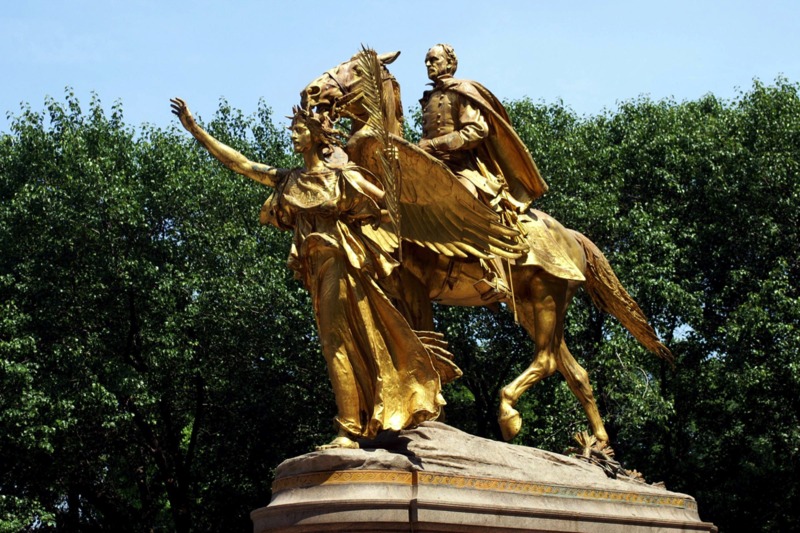Sherman Monument, Grand Army Plaza, New York City
 In 1892, shortly after the death of William Tecumseh Sherman, members of New York City’s Chamber of Commerce raised funds and hired sculptor Augustus Saint-Gaudens to create a monument to the popular Union general. In 1888, Saint-Gaudens had modeled a bust of the general that would serve as the study for the large gilded-bronze equestrian statue. It would be Saint-Gaudens’s last major work, and serve as the centerpiece of Manhattan’s Grand Army Plaza. Saint-Gaudens used an African-American woman from Georgia as the model for the winged allegorical figure of Victory who leads Sherman. The architect Charles McKim designed the pedestal. The monument was unveiled on May 30, 1903, and hailed for the dramatic sense of movement conveyed through the horse’s musculature, the wind in its tail, and the sweep of Sherman’s cape.
In 1892, shortly after the death of William Tecumseh Sherman, members of New York City’s Chamber of Commerce raised funds and hired sculptor Augustus Saint-Gaudens to create a monument to the popular Union general. In 1888, Saint-Gaudens had modeled a bust of the general that would serve as the study for the large gilded-bronze equestrian statue. It would be Saint-Gaudens’s last major work, and serve as the centerpiece of Manhattan’s Grand Army Plaza. Saint-Gaudens used an African-American woman from Georgia as the model for the winged allegorical figure of Victory who leads Sherman. The architect Charles McKim designed the pedestal. The monument was unveiled on May 30, 1903, and hailed for the dramatic sense of movement conveyed through the horse’s musculature, the wind in its tail, and the sweep of Sherman’s cape. URL: http://www.nycivilwar150.org/counties/new_york/new_york_monuments.html
Creator: Augustus Saint-Gaudens
Date: 1903



